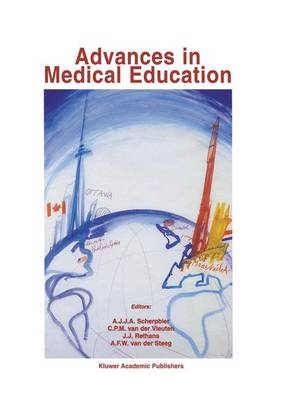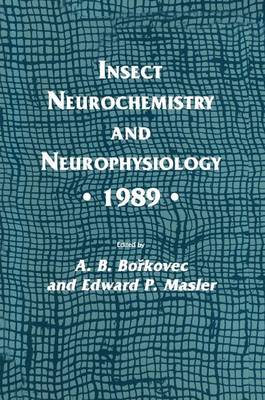Experimental and Clinical Neuroscience
2 total works
Insect Neurochemistry and Neurophysiology · 1986
by A. B. Borkovec and Dale B. Gelman
Published 21 January 1987
The nature and diversity of presentations at the second International Conference on Insect Neurochemistry and Neurophysiology (ICINN--86) held at the University of Maryland on August 4-6. 1986, attest to the vital ity and broad scope of research in insect neuroscience. The present vol ume is a written account of the invited lectures, contributed papers, and posters presented at the conference, and as such, serves as a fair indica tor of the trends in current research in this field here and abroad. The principal portion of this book consists of seven review papers that were presented by invited speakers. Although the topics vary wide ly, they reflect on and emphasize the main theme of the conference, i. e. , the nature and function of molecular messengers that communicate be meen the central nervous system and organs or tissues involved in the growth, development, reproduction, and behavior of insects. This empha sis is continued in the following three sections on neurochemistry, neuro physiology, and neuroanatomy, although no conscious effort was made by the organizers to highlight these particular fields of neuroscience. It is evident that the recent advances in both physical and chemical analyti cal techniques have made possible the acquisition of structurally defined probes, the long sought-after tools for unraveling the secrets of endogen ous communication. Each section of short papers derived from the oral and poster presentations at the conference is prefaced by an overview that highlights and summarizes the section's content.
Insect Neurochemistry and Neurophysiology · 1989 ·
by A. B. Borkovec and Edward P. Masler
Published 6 April 1990
This volume contains the proceedings of the Third International Conference on Insect Neurochemistry and Neurophysiology (ICINN'89), which was held at the University of Maryland at College Park, Maryland, on July 10-12, 1989. The ICINN meetings were ini- tiated in 1983 at a time when insect neurobiology was emerging as a vigorous sector of entomology, requiring a degree of attention and autonomy long before granted to its sister field, vertebrate neurobiol- ogy. The distinctly medical aspects of the latter were replaced by potentiali ties for developing new approaches to insect control, and the difference was reflected in the kind of sponsorship that has made the ICINNs possible. It is to the credit of the sponsors of the present con- ference, i. e. , Agricultural Research Service, US Department of Agri- culture,American Cyanamid, BASF, Dow Chemical USA, E. I. DuPont de Nemours, Monsanto, Nippon Soda, Rohm and Haas, and Sandoz Crop Protection, that they recognized the need for providing a forum for specialized scientific presentations as well as a medium by which ideas and information could be exchanged directly and cooperation could be planned.
As in the previous conferences in 1983 and 1986, the ICINN'89 program contained state-of-the-art plenary lectures or reviews by invited speakers as well as shorter research communications pre- sented orally or as posters. The latter two are included here in three sections: neuroanatomy, neurochemistry, and neurophysiology.
As in the previous conferences in 1983 and 1986, the ICINN'89 program contained state-of-the-art plenary lectures or reviews by invited speakers as well as shorter research communications pre- sented orally or as posters. The latter two are included here in three sections: neuroanatomy, neurochemistry, and neurophysiology.

